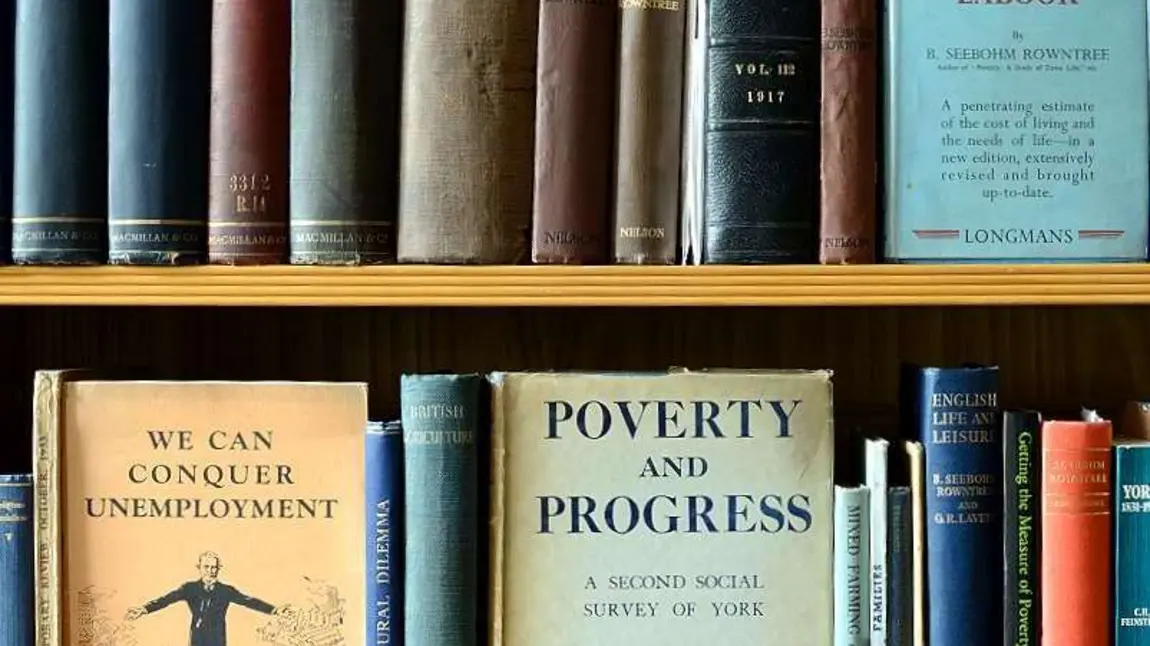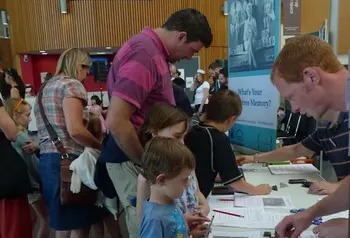Bringing Seebohm Rowntree's legacy back to York

This is its second successful bid to HLF in two years, following the York Remembers Rowntree Oral History project (£59,000) that finishes this spring.
Bridget Morris, Executive Director, said: “We were overwhelmed by the interest and generosity of so many people and groups in York when we first announced our wish to buy this collection and save it from being sold overseas. Very many people wrote to us and donated to our fundraising campaign and we would like to take this opportunity publicly to thank them. We are of course absolutely thrilled by the HLF grant that will not only help us secure the collection but also widen the profile of Joseph Rowntree’s famous son by means of a series of small exhibitions that will go on display nationally.”
Fiona Spiers, Head of Heritage Lottery Fund Yorkshire & the Humber, said: “Sharing Heritage is a wonderful opportunity for communities to delve into their local heritage and we are delighted to be able to offer this grant to enable the Rowntree Society to purchase these unique documents. Heritage means such different things to different people, and HLF’s funding offers a wealth of opportunities for groups to explore and celebrate what’s important to them in their area.”
Making Seebohm’s name better known in York
Ironically perhaps, Seebohm’s name and legacy may be better known nationally than it is in York, where his father Joseph overshadows everything with the Rowntree name. But as most history GCSE students across the country will know, Seebohm is closely connected to the poverty surveys of people like Charles Booth at the turn of the last century. (And probably too those same school students register and remember his unusual name - originally the surname of his German-born relatives on his mother’s side.)
Planned exhibitions
The exhibitions will display selections from Rowntree’s books that demonstrate his immense influence through his analyses of poverty and social welfare, as well as new ways of looking at business management in the UK in the twentieth century. The first places planned for the travelling exhibition will be Ruskin College Oxford (that was founded on educational aspirations for working people similar to Rowntree’s) and also the Oxford Friends Meeting that also has historic links to the Rowntree family.
[quote=Bridget Morris, Executive Director]"We were overwhelmed by the interest and generosity of so many people and groups in York"[/quote]
Speaking of Poverty: A Study of Town Life, Winston Churchill in Blackpool in 1901 stated that: 'I have been reading a book which has fairly made my hair stand on end, written by a Mr Rowntree who deals with poverty in the town of York.' Another is How the Labourer Lives: A Study of the Rural Labour Problem, written in 1913 and illustrating how Rowntree expanded his research beyond the city walls of York to explore rural labour in the UK. He states that 'We merely attempt to give a picture, drawn from life, of the actual conditions under which one section of the agricultural population, the labourers, are living.' This book can perhaps be seen as a very early example of using oral histories to gather information to create what became the beginnings of Social History.
An autograph letter on the Fair Wage
The highlight of the exhibition is a letter written by Rowntree on 10 Downing Street notepaper in 1916 urging the Prime Minister to ensure that wages after the war would equate with wages before it. This letter perfectly represents how influential Rowntree was on national social policy and how far he was willing to go to help working people. Seebohm’s letter also demonstrates his role as an advisor at the heart of government in the midst of the war. It is clear to see that the problem of wages, and especially the question of living wages, has been an issue for the greater part of the last century, and not just something new we are talking about today.
A pioneer in business management and industrial welfare
The Seebohm collection illustrates the industrial prowess of Rowntree and his commitment to providing healthcare, better working conditions, and financial stability to his factory workers while also attempting to expand the Rowntree empire. We can trace this attitude through his publications such as The Human Needs of Labour, Industrial Administration: A Series of Lectures, The Third Winter of Unemployment, Industrial Unrest: A Way Out, and one of Rowntree’s most important books, The Human Factor in Business. The titles in fact speak for themselves.
Seebohm and Japan
Accompanying these books is a picture of Seebohm in Japan in front of a store of the confectionery giant, Morinaga. The story of this image is interesting because he was in Japan to buy a large portion of the Morinaga company in order of expand Rowntree’s Chocolates into the Japanese market. Although the business deal was never completed, it illustrates that although Seebohm was in the prime of his social reform days, he never lost sight of the business and was always looking for new ways to improve the company.
Seebohm and Lloyd George
Another aspect the Rowntree Society’s exhibition is the development of the relationship between Seebohm and David Lloyd George. There is little information about their relationship in archive sources, but through this collection, it is clear through their books and articles that they co-authored a number of campaigns, pamphlets, and reports and were very close. In fact, Rowntree may have even been one of his closest advisors on social welfare while he was Prime Minister. Through the Seebohm collection, we are able to explore and follow the relationship between Seebohm and the past Prime Minister from the start in 1912 with Rowntree’s involvement in the Land Enquiry Committee through the 1920s and into the 1930s. It was only with the publication of The Agricultural Dilemma that Lloyd George became disappointed with Rowntree’s findings and their relationship ended in 1935. This rollercoaster of a relationship is greatly important in understanding just how influential Seebohm was in the world of politics while remaining in the shadows himself.
The Rowntree Society is currently talking to the Lloyd George Museum in Criccieth North Wales, with a view to taking the exhibition there later this year.
“Social dynamite”
Rowntree’s work was also a hit with general audiences. His 1951 book, English Life and Leisure: A Social Study, received admiring reviews including one quote that it was “Social Dynamite.” Rowntree used his trademark interview style of research to discover how everyday people enjoy their leisure time. His chapters include opinions on cinemas, books, outdoor activities, as well as sexual encounters. But also the book was also strongly criticised in the Times for predicting a decline in Christian worship in the country. Old-style oral histories, collectively it captures a fascinating profile of post-war Britain.
Why is this book collection important?
The work of Seebohm Rowntree is important because he was a major factor in shaping the way of life we lead today. His pioneering style of interviewing real people to collect their life histories, realising the dire situation of working class England, led him to outline what percentage of people lived below the poverty line, and also what it would take to reduce or eliminate that poverty. He fought through his books, articles, and letters to redefine how businesses run and treat their workers. This includes his desire to implement a National Minimum Wage in England that would also be a liveable wage. It needs hardly be said that although Seebohm is a figure of the past, many of the issues he researched, wrote, and believed are still deeply relevant today.
Help from California
The development of this project is being aided by Dan Johnson, an MA student in Intistute for the Public Understanding of the Past at the University of York, who comes all the way from San Diego in California. Dan says: “I’m learning hugely about the process of creating an exhibition as well as a deeper understanding of Seebohm and all of the stories that we’ve been able to uncover through the collection. I am very much enjoying working for the Rowntree Society during my 10-week placement.”
